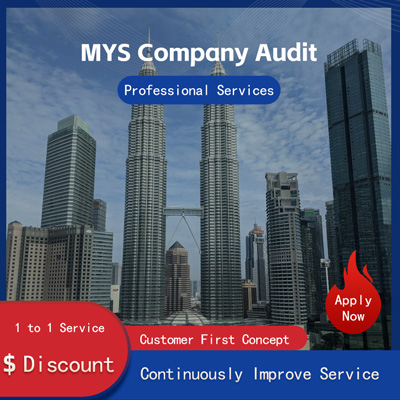
How to Properly Select and Apply Accounting Accounts When Doing Bookkeeping for a U.S. Company? In-Depth Analysis!
How to Choose and Apply Accounting Accounts When Bookkeeping for U.S. Companies
Selecting and applying appropriate accounting accounts is a crucial aspect of financial management for businesses operating in the United States. As global economic conditions evolve and domestic U.S. economic policies shift, companies face both new challenges and opportunities in their financial reporting processes. Especially under the current environment of easing inflationary pressure and a relatively stable job market, financial transparency and compliance have become increasingly important.

I. Understanding the Basic Classification of Accounting Accounts
In the U.S. accounting system, accounts are primarily categorized into five major groups Assets, Liabilities, Equity, Revenue, and Expenses. These categories form the foundation of corporate financial statements and directly affect the accuracy of the balance sheet, income statement, and cash flow statement.
1. Asset Accounts Include cash, accounts receivable, inventory, and fixed assets, reflecting the resources owned by the company.
2. Liability Accounts Such as accounts payable, short-term loans, and long-term debt, representing the company's obligations.
3. Equity Accounts Mainly include common stock and retained earnings, reflecting the value of the company’s net assets.
4. Revenue Accounts For example, sales revenue and service income, recording gains generated through business activities.
5. Expense Accounts Such as salaries, rent, and depreciation expenses, used to measure the costs incurred in generating revenue.
In practice, companies must refine these broad categories based on their industry characteristics and operational models. For instance, a technology firm might establish a research and development expense account, while a retail company would focus more on inventory cost and sales discount tracking.
II. Selecting Appropriate Accounting Accounts Based on Business Operations
Accounting account structures can vary significantly across industries. Take the recent U.S. retail sector as an example Walmart and Target both emphasize inventory management in their financial reports. During bookkeeping, these companies often set up specific inventory-related accounts such as inventory write-down reserves and freight charges to better reflect their operational costs.
For tech startups, intellectual property and RD investment are among the core assets. Therefore, these companies tend to place greater emphasis on the accounting of intangible assets and capitalized development costs. For example, some SaaS Software as a Service companies capitalize part of their RD expenses and amortize them over several years, aligning costs more closely with related revenues.
With remote work becoming the new norm, more companies are focusing on new types of expense accounts such as employee benefits and depreciation of remote office equipment. This requires companies to make flexible adjustments to their existing account structures to ensure that financial data accurately reflects their operational realities.
III. Following GAAP to Ensure Compliance
Generally Accepted Accounting Principles GAAP, established by the Financial Accounting Standards Board FASB, are a standardized framework governing financial reporting in the United States. All companies incorporated or listed in the U.S. must comply with GAAP when preparing financial statements.
When choosing and applying accounting accounts, businesses must strictly adhere to these standards to avoid audit risks caused by improper accounting treatments. For example, the Securities and Exchange Commission SEC has recently intensified its oversight of revenue recognition practices for public companies, requiring firms to follow ASC 606 - the five-step revenue recognition standard. This means that when setting up revenue accounts, companies must consider contract terms and performance obligations rather than simply recognizing revenue upon invoice issuance.
Additionally, companies involved in cross-border transactions need to account for the impact of foreign exchange rate fluctuations on financial statements. Typically, such firms should maintain a foreign exchange gain or loss account to record changes in value resulting from currency movements affecting foreign currency assets or liabilities.
IV. Setting Up Detailed Sub-Accounts to Improve Financial Analysis Efficiency
To support efficient financial analysis and decision-making, companies should design their chart of accounts with clarity and structure. For instance, the general ledger account Selling Expenses can be further broken down into sub-accounts such as advertising, travel expenses, and sales personnel salaries. This level of detail helps management understand the composition of various expenditures and supports budget control and performance evaluation.
Moreover, modern enterprises widely use ERP systems like SAP, Oracle, and QuickBooks for financial management. These platforms enable multi-dimensional data aggregation and analysis. Companies can assign different cost centers, profit centers, or project codes to achieve more granular accounting. For example, a construction company can classify project costs by project number, allowing clear visibility into the profitability of each individual project.
V. Regular Review and Optimization of Account Structures
As business operations evolve, existing accounting structures may no longer fully meet new management needs. Companies should regularly review and optimize their account settings. If certain operations are discontinued, the corresponding accounts should be deactivated promptly. Similarly, if new revenue streams emerge, relevant revenue accounts should be added accordingly.
Before year-end closing, finance departments should clean up account balances, checking for any abnormal postings or incorrect usage of accounts. This not only enhances the accuracy of financial data but also lays a solid foundation for tax filings and audits in the following year.
Conclusion
In summary, selecting and applying accounting accounts appropriately is not only the foundation of financial operations for U.S. companies but also key to ensuring high-quality financial information. Businesses should build a practical and GAAP-compliant chart of accounts tailored to their industry, operational strategy, and regulatory requirements. Only in this way can they provide strong support for strategic decision-making and help the company remain resilient and competitive in a dynamic market environment.
Helpful (0)
No help (0)
Still have questions after reading? More than 98,000 users have contacted us. Please fill in the following information to obtain business information.

Previous Article
What’s the Cost of Accounting and Tax Filing for a Singapore Company? Do You Know These Key Factors?
Jul 17, 2025Service Scope
MoreRecommended for You
- How to Open a Singapore Bank Account from Mainland China? Here’s the Complete Guide
- How to Profit from Your NRA Dollar Account Easy Tips for Smart Growth
- Why Singapore's Private Banks Have Become the Top Choice for Global Wealth Management
- How to Smoothly Open a SG Bank Account? Step-by-Step Guide Key Tips
- How to Open a Bank Account in Singapore? Step-by-Step Guide to the Process Requirements
- How Mainland Cos. Can Easily Open a SG Bank Account
- A Step-by-Step Guide to Easily Open a SG Bank Account
- Independent Public Accountants under Singapore Companies Act Roles, Responsibilities Future Challenges
- Why Does NRA Account Start with NRA? A Clear Explanation of This Financial Term
- Where to Open an NRA Account? Global Account Opening Guide Got You Covered
- Ultimate Guide to Setting Up a Company Account in Singapore Seize New Opportunities in Wealth Management
- Opening a Bank Account in Singapore Unlock Global Opportunities for Your Wealth
- S’pore vs HK Banks Which Is Better for Wealth Management? Find Out the Smart Choice
- How to Easily Open a Singapore Bank Account in Mainland China? Ultimate Guide + Practical Tips
- NRA Bank Confirmation Revealed Secrets You Must Know About Different Account Types
- How to Smoothly Open a Singapore Bank Account in China? A Guide to the Process and Key Points to Note
- How to Open a US Bank Account for a Hong Kong Company? Essential Requirements Explained!
- Want to Open an Account at Standard Chartered Bank in Beijing? Understand the Requirements in One Article!
- How Long Does It Take to Cancel a US Bank Card? Uncovering the Process and Truth Behind It
- Opening a Personal US Account Isn't That Hard - Just Follow These Steps and Tips


 ONE
ONE








Customer Reviews
Small *** Table
December 12, 2024The experience was very good. I was still struggling to compare it with other companies. I went to the site a few days ago and wanted to implement it as soon as possible. I didn't expect that everything exceeded my expectations. The company is very large, with several hundred square meters. The employees are also dedicated and responsible. There is also a wall of certificates. I placed an order on the spot. It turned out that I did not make a wrong choice. The company's service attitude is very good and professional. The person who contacted me explained various things in detail in advance. After placing the order, the follow-up was also very timely, and they took the initiative to report the progress to me. In short, I am very satisfied and recommend this company!
Lin *** e
December 18, 2024When I first consulted customer service, they recommended an agent to me. They were very professional and patient and provided excellent service. They answered my questions as they came in. This 2-to-1 service model is very thoughtful. I had a lot of questions that I didn’t understand, and it’s not easy to register a company in Hong Kong. Fortunately, I have you.
t *** 7
December 19, 2024I originally thought that they only did mainland business, but I didn’t expect that they had been doing Hong Kong business and were doing very well. After the on-site interview, I decided to ask them to arrange the registration of my Hong Kong company. They helped me complete it very quickly and provided all the necessary information. The efficiency was awesome. It turns out that professional things should be done by professionals.👍
b *** 5
December 16, 2024In order to register a company in Hong Kong, I compared many platforms and stores and finally chose this store. The merchant said that they have been operating offline for more than 10 years and are indeed an old team of corporate services. The efficiency is first-class, and the customer service is also very professional.